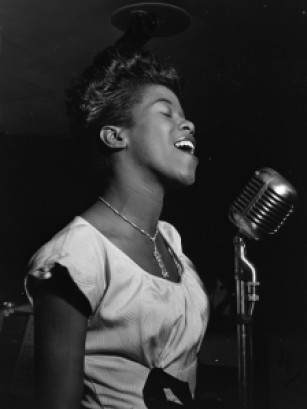Aided by her extraordinary voice, technical proficiency, and mastery at adopting multiple performing personas, Sarah Vaughan obscured conventional divisions between jazz and pop, masculinity and femininity, and blackness and whiteness. By transcending these binary oppositions, she crafted a vocal identity that was commercially viable, artistically satisfying, and which undermined racial stereotypes. In so doing, she reconfigured how American audiences understood the black female voice.
In American jazz criticism of the 1940s and 1950s, discourses on vocal timbre became a means to maintain boundaries between style, race, and gender, and anxiety was expressed by critics when a voice did not match the expectations created by the body that produced it or vice versa. Given that Vaughan’s voice was constructed as neither distinctly black nor white, and neither distinctly jazz or pop, this provides some explanation for her dramatic transformation, including plastic surgery, to create a physical appearance appropriate for her voice.
The roles of recording technology, the suburban home, and the contrasting domain of the nightclub all must be considered in terms of the politics of crossover in Vaughan’s career.
This according to To bebop or to be pop: Sarah Vaughan and the politics of crossover by Elaine M. Hayes, a dissertation accepted by the University of Pennsylvania in 2004.
Today is Vaughan’s 90th birthday! Above, the singer in 1946; below, in 1958.
 Related article: Happy birthday Sarah Vaughan
Related article: Happy birthday Sarah Vaughan


